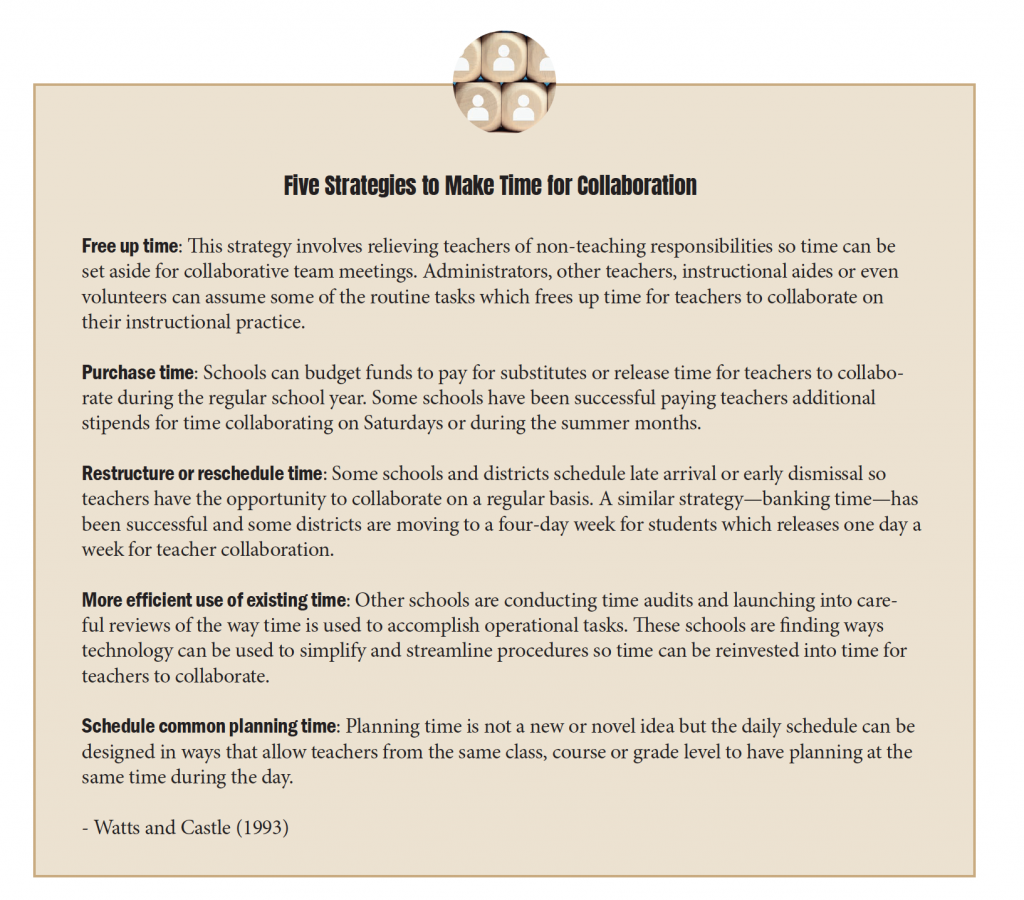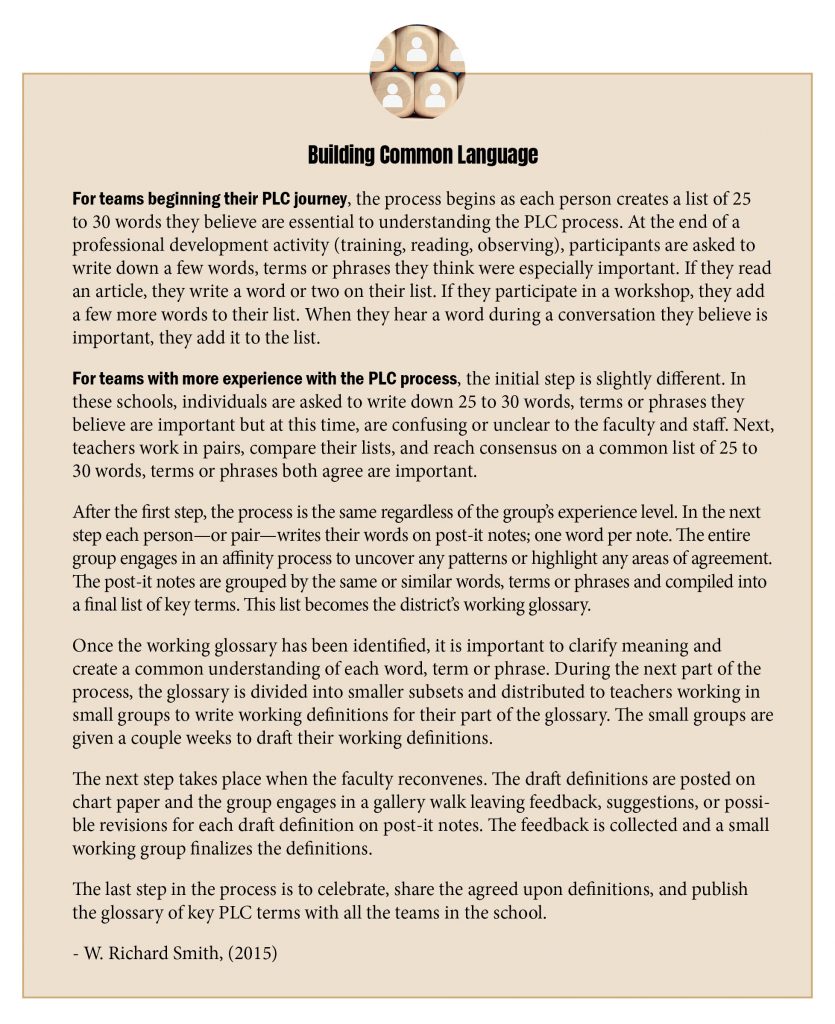By Tom Many, EdD
Those who hope to improve student achievement by developing the capacity of staff to function as a PLC must create and foster the conditions that move educators from mere work groups to high-performing collaborative teams. – DuFour et al. (2016, p. 67)
There are several conditions school leaders should consider as they contemplate establishing collaborative teams. Teachers will inevitably ask questions like why the team was established, what is the team’s purpose, when will the team meet, how will the team communicate, and who will be on the team. All of these are important questions to consider and the chances of a successful launch of the PLC process are greatly enhanced if principals, coaches, and teacher leaders answer as many as possible during the early phases of implementing the PLC process.
We have already established why collaborative teams are important. If we believe the fundamental purpose of schools—and by extension collaborative teams —is learning, not teaching, and if we acknowledge teachers are better able to fulfill that purpose when they collaborate, then it is not complicated; working together is more effective than working alone.
Designated and protected time for teams to meet during the regular school day is one of the critical conditions that must be in place before establishing teams. According to Raywid (1991), “Collaborative time for teachers to meet to undertake and sustain school improvement may be more important than equipment, facilities, or even staff development.” (p. 30)
“When will teams find time to collaborate?” is really the wrong question. It’s unlikely leaders will find any more time so it’s important schools make time for teams to collaborate a high priority when designing the master schedule. Time is a resource, and how (and on what topics) time is spent reflects what a school values.
As the PLC practice of teams develop, the way time is used shifts and teachers find they need less time learning about the work and more time working on the work. Watts and Castle (1993) identify five strategies school leaders can use to make time for collaboration (see table on five strategies below for more information). Leaders need to understand, as teacher roles shift from working in isolation to working in collaboration with others, so too must the way schools use time.

Building common language is the best way to respond to questions about how teams will communicate and should be addressed during the process of establishing teams. As teachers begin collaborating with colleagues, they discover the need for greater clarity around the definition and meaning of important words, terms and phrases. Teams naturally develop common language around their practice; however, it is more efficient and effective to be intentional about the development of common language. Regardless of whether the vehicle is simple activities such as BINGO or more sophisticated mental models, those who coach teams find it very beneficial to focus on common language.
Teachers participate in workshops, read relevant articles or participate in book studies as they begin to learn about the PLC process. Occasionally, teams with more experience find it necessary to engage in professional development to refocus the PLC process in their school. Whether beginner or advanced, Rich Smith believes these kinds of activities offer great opportunities to develop common language by creating a districtwide glossary of PLC terms.
Smith suggests the faculty engage in a simple but powerful process to build common language (see table on building a common language below for a description of the process). It should be noted that starting the process differs for those new to PLCs and those with experience, but regardless, building common language is essential to the successful implementation of the PLC process.

Finally, school leaders must make every effort to create meaningful teams. Some argue leaders must consider factors such as access and proximity to other team members during the regular school day but the single most critical factor in deciding who should be on a team is based on the answer to a relatively straightforward question, “Do team members have a shared responsibility for responding to the four critical questions in ways that enhance student learning?” (DuFour et al. 2016, p. 6) If the answer is “yes,” the right team members have been identified.
Creating highly effective teams is a deliberate process and consideration of each of these conditions enhances the odds that a school’s efforts to establish teams will succeed.
Dr. Tom Many is an author and consultant. His career in education spans more than 30 years.
References
Raywid, M. A. (1993, September). “Finding Time for Collaboration.” Educational Leadership. V. 51, No. 1. pp. 30-34.
Watts, G. & Castle, S. (1993, December). “The Time Dilemma in School Restructuring.” Phi Delta Kappan. V. 75, No. 4. pp. XX.
TEPSA News, March/April 2021, Vol 78, No 2
Copyright © 2021 by the Texas Elementary Principals and Supervisors Association. No part of articles in TEPSA publications or on the website may be reproduced in any medium without the permission of the Texas Elementary Principals and Supervisors Association.


